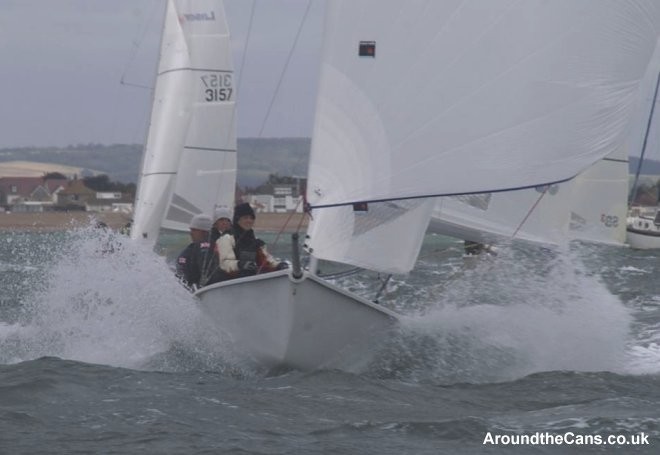SailJuice.com- Carol Cronin on women's matchracing
by Carol Cronin on 14 Nov 2007

Volkswagen Touareg Laser SB3 National Championships Around The Cans
http://www.aroundthecans.co.uk
Carol Cronin is one of the best female keelboat sailors in the USA. A regular podium finisher in Yngling regattas and match race events, she was US Olympic representative in the Yngling for Athens 2004. Here she offers her view on last week’s decision by ISAF to introduce Women’s Match Racing to the Olympic roster.
As usual with ISAF meetings, it wasn’t over until the Council finally sang. And recent history tells us it’s still not really over, not until next year when the equipment is chosen.
Remember 1999? Only two Olympic quads ago, Council selected keelboat match racing as the new women’s medal for 2004. One year later, they backpedaled to women’s keelboat fleet racing and selected the Yngling as the newest member of the Olympic family. Yes that was then, and this is 2007/8. But has anything really changed?
The answer, fortunately, is yes. Equipment options are better now, and the equipment is a very, very big issue for match racing since boats will be supplied. Over the past eight years the Yngling has been dragged kicking and screaming into the 21st century, but droop hiking is considered too dangerous for match racing’s signature tight maneuverings so it is unlikely to be reselected.
In 2000, other classes considered included the J/22, a well respected class sailed around the world – usually by four women, rather than three. The Sonar has a similar crew weight issue, and the Lightning is not quite a keelboat. That’s how we ended up with the Yngling.
For 2012, two designs just granted ISAF recognized class status can be added to the list of possibilities: the Laser SB3 and the Ultimate 20. The SB3 has a very solid builder behind it, but it is a young class with little support as of yet outside of Europe. The U20 has a similar continental issue: little support as of yet outside the US. Politics and marketing savvy will, as usual, play a pivotal role in the equipment decision. (Note: I’m not a big Sonar fan, but they are already used in the Paralympics, which are held a month or so after the Games. Surely it would make sense to use the same basic equipment for two keelboat classes?)
Assuming ISAF doesn’t reverse itself and match racing equipment is decided next November as scheduled, locations around the world (we can only hope) will order a fleet of boats, and any serious team will buy at least one. Since builders can’t afford to stockpile boats hoping to get the ISAF nod, the chosen one had better be able to gear up production in a hurry.
Leadership in women’s match racing has also improved dramatically since 1999, but they have some big hurdles to overcome if the match racing medal is going to hang tough through next year’s meetings. One of the biggest issues to address is who pays the logistics bill. Match racing requires a fleet of equally matched boats and sails, umpire boats and umpires, a very qualified race committee and extra mark boats, a 'fixit' boat, and someone to keep track of all the equipment between events.
Successful venues around the world have managed to attract sponsors to cover these costs, and a well-presented Olympic circuit could be a very desirable product. Match racing will not, contrary to some theories, reduce competitor expenses. The only savings I can see is boat shipping, which is a very small piece of an annual Olympic budget and covered by many national federations. Sailors will still have to own at least one boat and cover travel and coaching expenses.
For the rest of this story http://sailjuiceblog.com/2007/11/14/womens-match-racing-the-good-the-bad-the-ugly/!click_here
If you want to link to this article then please use this URL: www.sail-world.com/39065